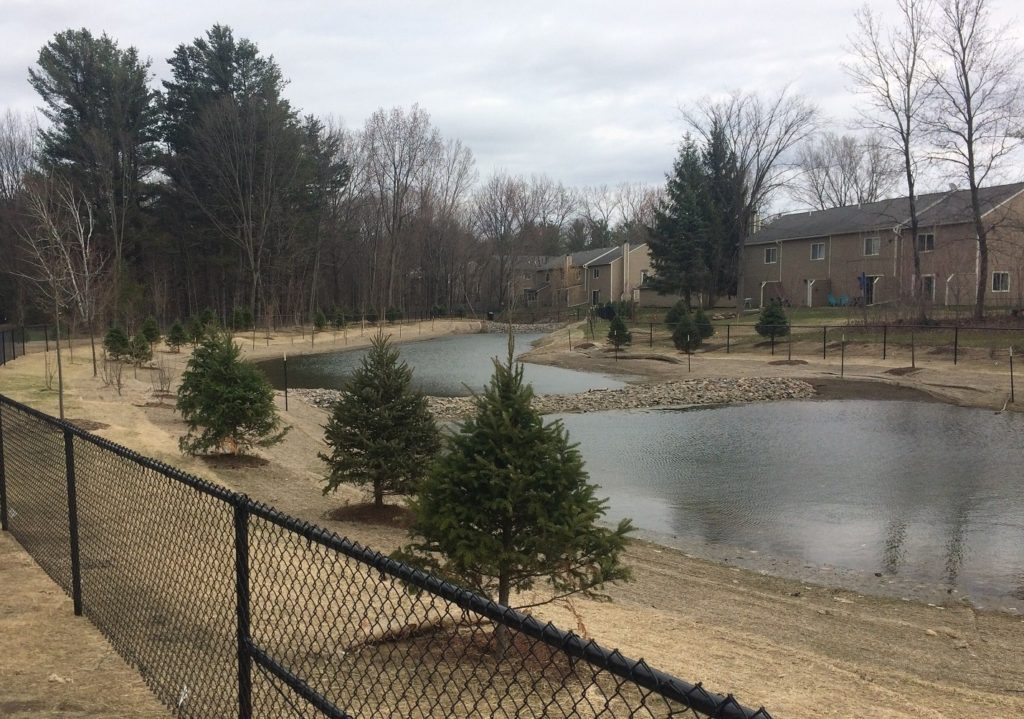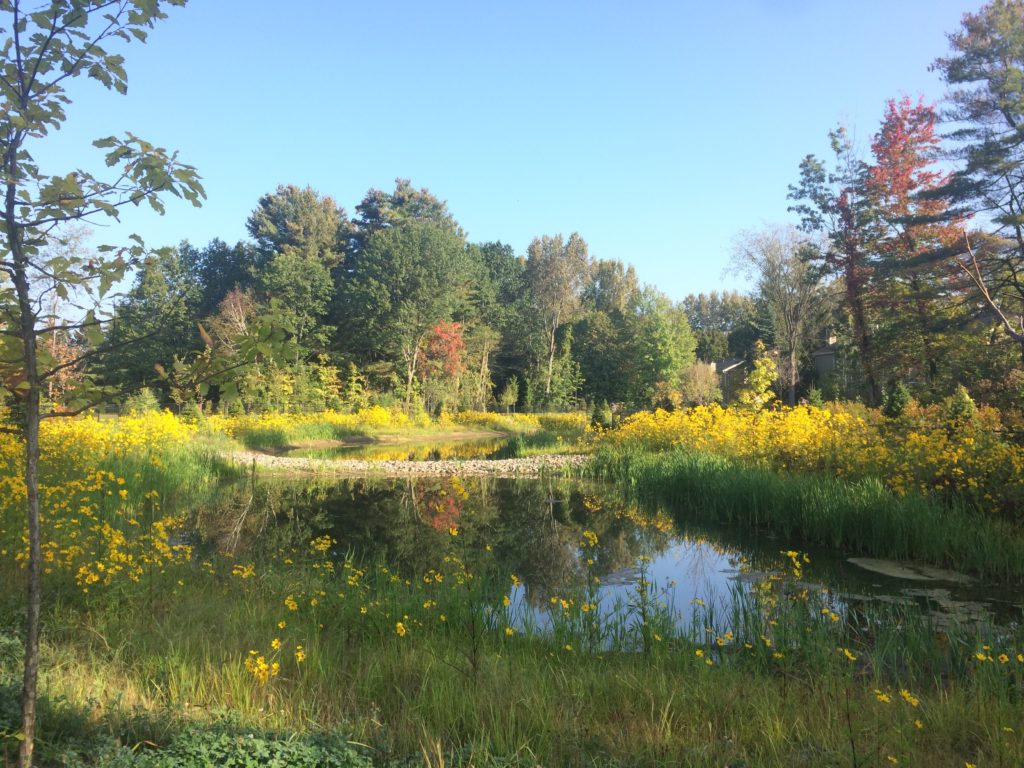Problem
When the Stonehedge neighborhood was originally constructed the project did not contain significant measures to manage stormwater runoff. As a result, runoff from Stonehedge would flow untreated to Potash Brook and cause flooding in some areas. The neighborhood also has an expired State stormwater permit. Future permit renewal will likely require installation of stormwater treatment.
Description
The City worked with the homeowner associations that make up the Stonehedge neighborhood to create an improved plan for stormwater management. The stormwater improvements in the neighborhood include stormwater treatment swales, bioretention areas, a detention pond, and pipe replacement. The new system provides effective stormwater treatment and flood protection.

Benefit
The majority of stormwater runoff generated in the Stonehedge neighborhood is directed to a new stormwater treatment pond. In other areas, water is sent to bioretention areas for treatment. The pond and bioretention areas remove sediment and other pollutants prior to discharging to Potash Brook. In addition, these stormwater treatment practices detain excess volumes of stormwater runoff and slowly release water to the brook. This helps prevent erosion of stream banks and reduce the risk of downstream flooding.
Best Management Practices
Stormwater detention pond, bioretention areas, stormwater treatment swale, and pipe replacement.
Timeline
2016-2017
Total Project Value
$741,000
Funding Sources
The Lake Champlain Watershed Environmental Assistance Program managed by the U.S. Army Corp of Engineers, the Stonehedge Homeowners Associations, the Cedar Glenn Homeowners Association, and the South Burlington Stormwater Utility.
- Stonehedge Stormwater Project Construction Plans (PDF (9 MB)
- Stonehedge Stormwater Project Presentation (06/18/13) (PDF 7 MB)
Last Updated: 5/2014

